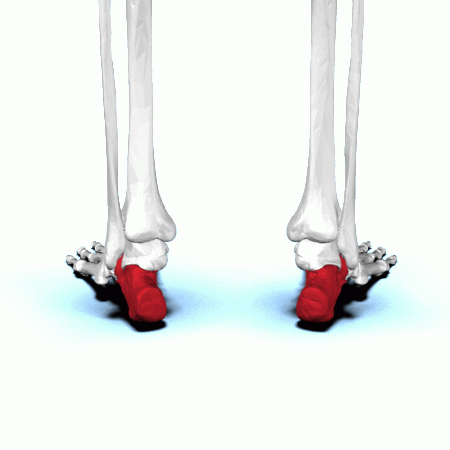Valgus Calcaneus: Symptoms, Causes, Treatment
What are the symptoms of valgus calcaneus?
Valgus calcaneus, also known as hindfoot valgus or calcaneovalgus deformity, is a condition where the heel bone (calcaneus) is displaced outward, causing the foot to turn inward. This condition can be congenital (present at birth) or acquired later in life due to injury or other factors. Symptoms of valgus calcaneus may include:
- Outward tilting of the heel: The most noticeable symptom is the outward deviation of the heel, which may be visible when standing or walking.
- Pain and discomfort: The misalignment of the foot and ankle can lead to pain and discomfort, especially when walking or standing for long periods.
- Difficulty walking: Some individuals may have difficulty walking normally due to the deformity and associated pain.
- Swelling: The affected foot and ankle may become swollen, particularly after prolonged periods of standing or walking.
- Reduced range of motion: Valgus calcaneus can limit the range of motion in the foot and ankle, making it difficult to flex or extend the foot fully.
- Calluses or corns: The abnormal pressure and rubbing caused by the deformity can lead to the formation of calluses or corns on the affected foot.
- Changes in gait: The misalignment of the foot and ankle can alter the individual’s gait, leading to an uneven or awkward walking pattern.
Treatment for valgus calcaneus depends on the severity of the condition and may include orthotic devices, physical therapy, or surgery in more severe cases. It’s important to consult with a healthcare provider or orthopedic specialist for an accurate diagnosis and appropriate treatment plan.
What are the causes of valgus calcaneus?
Valgus calcaneus, or hindfoot valgus, can have various causes, which can be congenital (present at birth) or acquired later in life. Some common causes include:
- Congenital deformity: Some individuals are born with a structural abnormality in the foot or ankle that predisposes them to developing valgus calcaneus.
- Neuromuscular conditions: Certain neuromuscular conditions, such as cerebral palsy, muscular dystrophy, or spina bifida, can affect muscle control and lead to imbalances that contribute to the development of hindfoot valgus.
- Trauma: Injuries to the foot or ankle, such as fractures or ligament tears, can disrupt the normal alignment of the bones and joints, leading to valgus calcaneus.
- Tendon imbalance: Imbalances in the tendons and muscles surrounding the foot and ankle can affect the alignment of the bones and contribute to the development of hindfoot valgus.
- Arthritis: Degenerative arthritis in the foot or ankle can lead to joint damage and deformities, including valgus calcaneus.
- Genetics: Some individuals may have a genetic predisposition to developing certain foot deformities, including hindfoot valgus.
- Idiopathic: In some cases, the exact cause of valgus calcaneus may not be known, and it is classified as idiopathic.
Treatment for valgus calcaneus depends on the underlying cause and the severity of the deformity. It may include orthotic devices, physical therapy, or surgery to correct the alignment of the foot and ankle. A healthcare provider or orthopedic specialist can provide a proper diagnosis and recommend the most appropriate treatment options.
What is the treatment for valgus calcaneus?
The treatment for valgus calcaneus, or hindfoot valgus, depends on the underlying cause and the severity of the deformity. Treatment options may include:
- Orthotic devices: Custom orthotic devices, such as shoe inserts or ankle braces, can help support the foot and ankle and improve alignment.
- Physical therapy: Physical therapy exercises can help strengthen the muscles and improve flexibility in the foot and ankle, which can help correct the deformity and improve function.
- Footwear modifications: Wearing supportive and properly fitted shoes can help improve foot alignment and reduce symptoms.
- Medications: Nonsteroidal anti-inflammatory drugs (NSAIDs) may be prescribed to help reduce pain and inflammation associated with the deformity.
- Surgery: In more severe cases, surgery may be necessary to correct the alignment of the foot and ankle. Surgical options may include soft tissue procedures to lengthen or tighten the tendons around the foot and ankle, or bony procedures to realign the bones.
The appropriate treatment for valgus calcaneus should be determined by a healthcare provider or orthopedic specialist based on the individual’s specific condition and needs. Treatment may also focus on addressing any underlying conditions that may be contributing to the deformity, such as neuromuscular disorders or arthritis.




